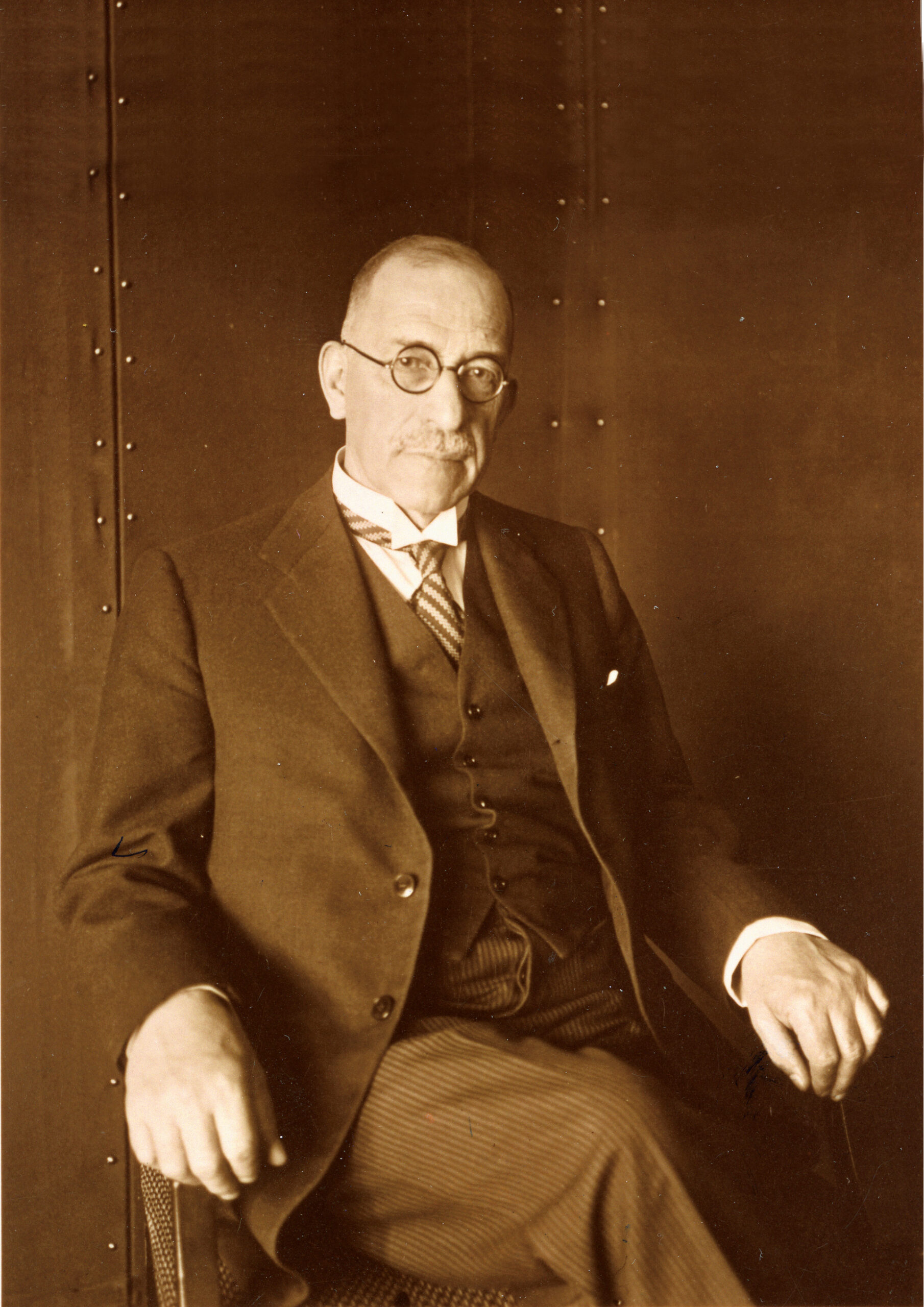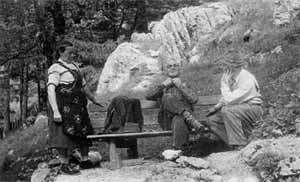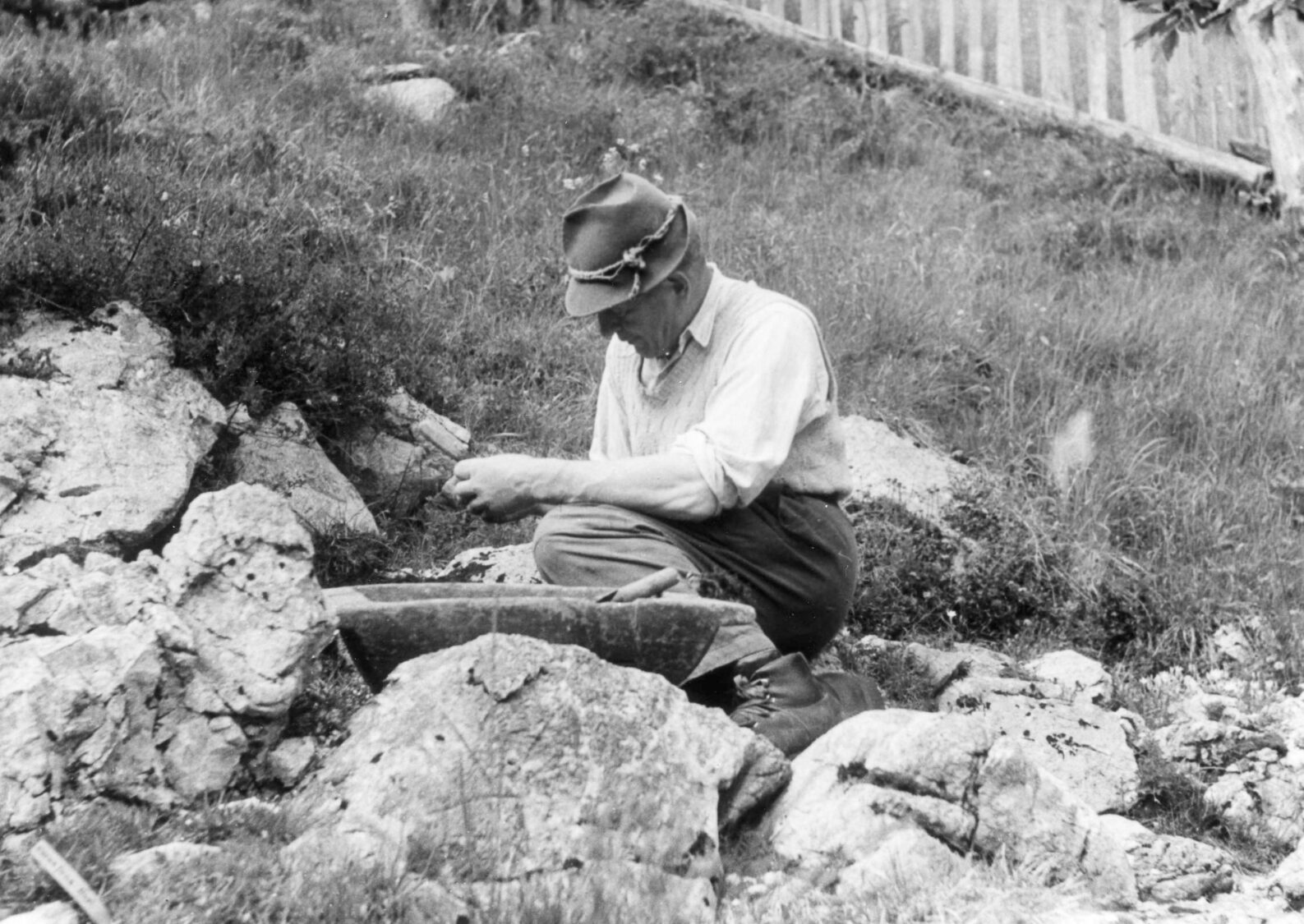
Albert Bois de Chesne leta 1935 (picture was submitted by his daughter Olga)
Albert Bois de Chesne – the founder
Albert Bois de Chesne was born on July 8, 1871, in Trieste, a descendent of a Huguenot family which had moved to Switzerland from France. In Trieste, where he attended secondary school, his professor was Edward Pospichal, a student of the littoral and Istrian floras. Pospichal instilled Bois de Chesne with an enthusiasm for botany and first introduced him to the secrets of the plant world. Pospichal took walks with Blois de Chesne through the Karst and Istria and took him to the Trenta Valley for the first time, where Albert fell in love with the world beneath Mts Triglav, Stenar, Razor, and Jalovec. After finishing school, Bois de Chesne continued his studies at the College of Forestry in Zürich, where his teacher was the renowned botanist Carl Schroter.
But as Albert Bois de Chesne’s father was a wood dealer, he could not dedicate himself exclusively to botany as he had to assume his father’s business. He bought extensive forests in Slavonia (Croatia), which he sold in 1925 and returned to Trieste. Now he could make his long-hidden dream come true. He already had the right to hunt in Trenta, and he complemented it by a purchase of land for a garden. While by car it was not really far from Trieste, he did not want to land at a high altitude as it would make an access and tending more difficult. Bois de Chesne himself admitted that he knew too little to put in the garden, so he consulted known experts for advice. He was helped by two well-known connoisseurs in the field of high alpine flora, Henri Correvon, and Lino Vaccari. Additionally, his good friend Dr. Julius Kugy was glad to come to his aid with data on the sites of rare plants. On the other side of the border of the time, in Yugoslavia, he was frequently in the company of Franc Juvan, then the gardener at the Botanical Garden in Ljubljana.
After the capitulation of Italy in 1943, Bois de Chesne was barred from further access to the garden, so he engaged the painter Marij Sivini, drove with him through the valleys of the western Julian Alps which had remained under Italy, bridged many a gorge, ascended numerous peaks, and everywhere he photographed plants in their natural environment while Sivini painted them. This was the origin of the watercolors and transparencies which Bois de Chesne donated to the city of Trieste, where they are housed in the City Museum. In 1952 the botanist Carlo Lona published an essay in which he described all the transparencies and paintings, and also quoted the sites and ecological characteristics of the plants.
Albert Bois de Chesne died on July 23, 1953, in Trieste.
Juliana after 1945 – Post-war period

Ancka Kavs, Ciril Jeglic and Anton Tožbar in May 1961 (foto: T. Wraber)
During the Second World War and for some years following, the Garden was essentially left unattended. Until 1947 Bois de Chesne paid monthly stipends for at least minimal care, and Anton Tožbar and Ančka Kavs tended it to the best of their abilities. But the tempest of the war showed no mercy to Juliana. Some plants perished, while others found a better site in neighboring beds, and the Karst species luxuriated as they loved the dry, sunny slope of Mt Kukla. In early 1947, before the littoral was annexed to the new Yugoslavia, the Bureau of nature conservation and science of the institute of cultural monuments and natural wonders of Slovenia took the Garden into its care to save it from further deterioration. Botanists from the Forestry Institute and the Natural Science Museum of Slovenia, of Ljubljana, immediately began its restoration. The botanists began to organize expeditions and carry plants to the Garden, while Anton Tožbar repaired the paths, and fixed the fence and troughs. Meanwhile, Ančka Kavs tended the beds and gathered seeds.
Maintenance by Museum
In 1954 professional management of Juliana was assumed by the Slovenian Museum of Natural History of Ljubljana. Its director, the botanist Dr. Angela Piskernik, has worked through the entire post-war period to renew Juliana, to tend and protect it carefully. By a government decree issued by the Committee for education and culture of the People’s Republic of Slovenia, published in the Official Gazette of 19 June 1951, Juliana was protected as a natural wonder of great significance to natural science and tourism, with international importance for its valley, mountain, subalpine and alpine floras.
